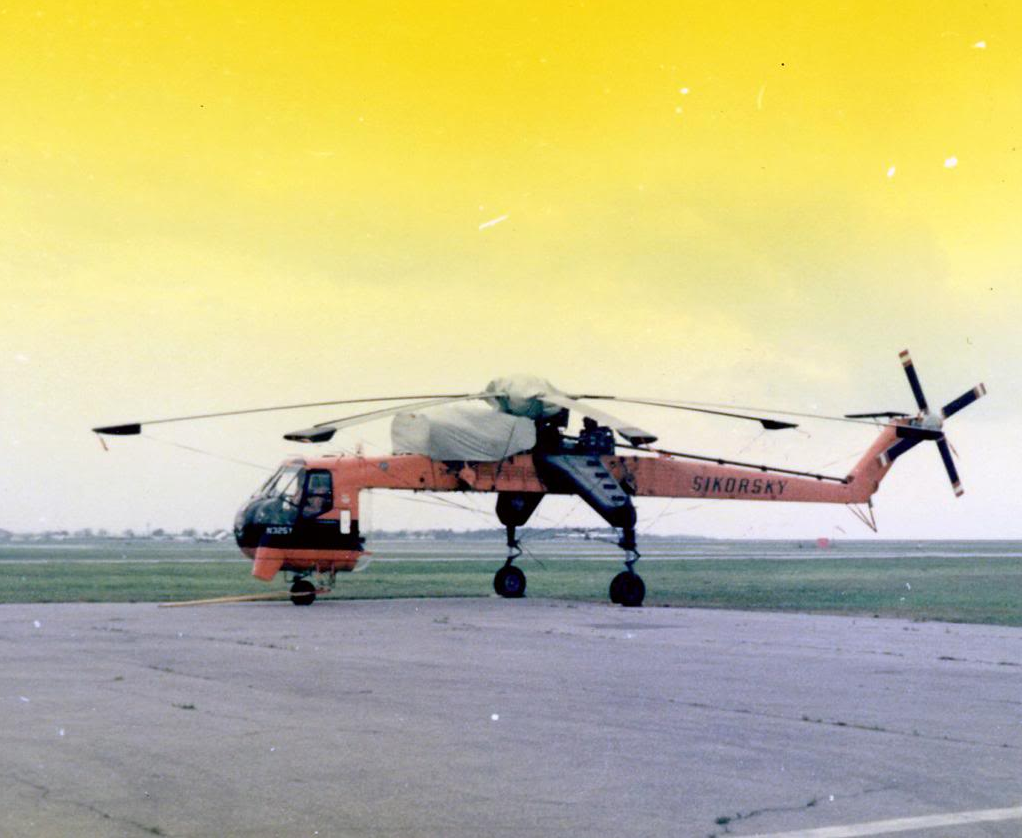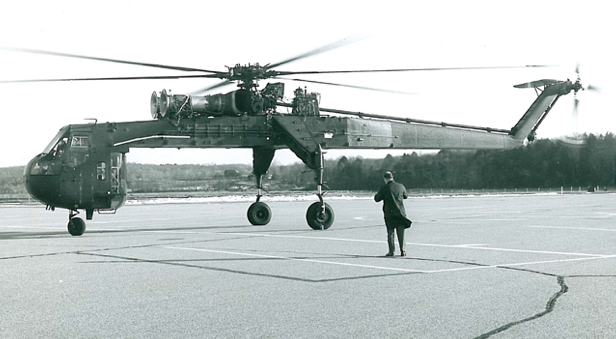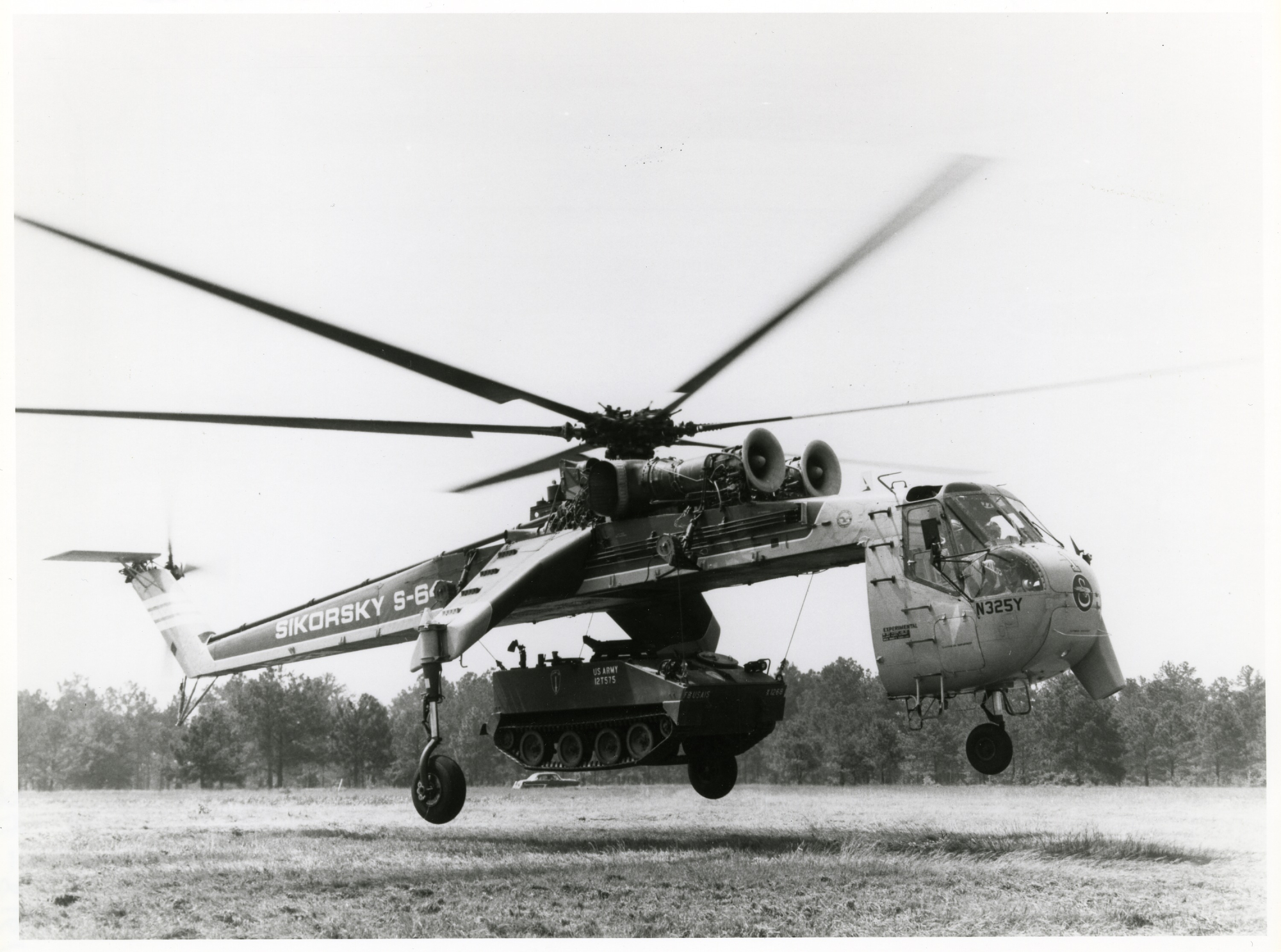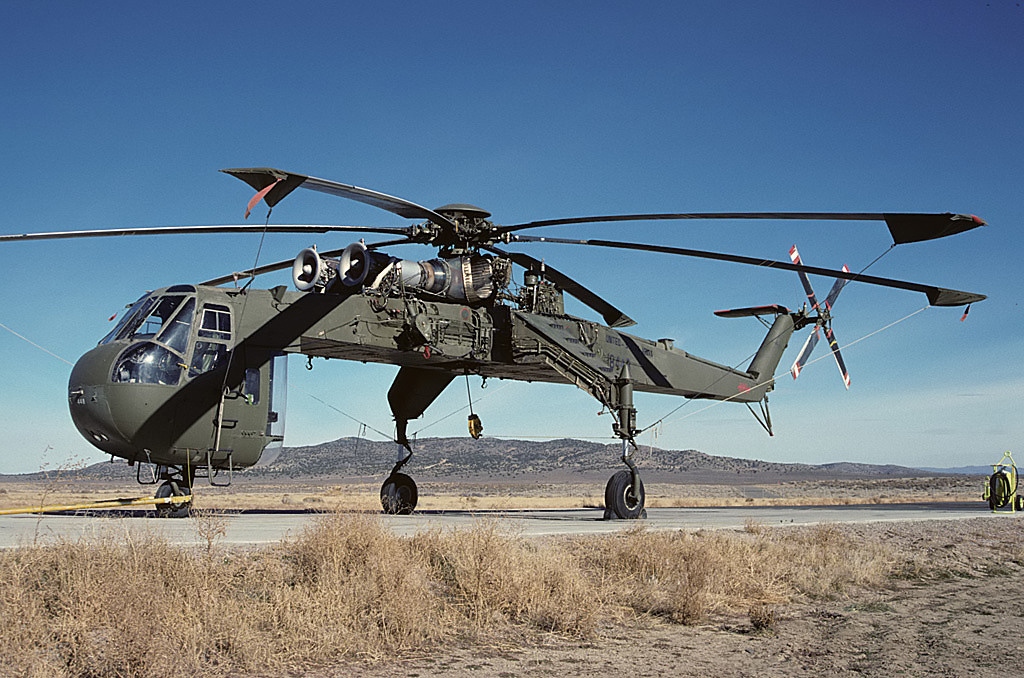

The Bridgeport Post reported:
First Flight Is Made By Sikorsky Skycrane
STRATFORD — Sikorsky’s twin-turbine S-64 Skycrane, a giant new helicopter which is expected to have wide military and commercial applications, made its first flight May 9, the company said today.
The S-64 lifted off the flight field here and hovered 50 feet in the air. Short sidewards, forward and backward flights were made, and the aircraft touched down and took off again twice after the original lift off. Engineering test pilots James E. Chudars and John H. Peterson were at the controls during the 20 minutes of flying time. As a result of this successful flight, a public demonstration for press military and commercial observers is planned for early June.
The big turbocopter is designed to carry external loads as heavy as nine tons. Two S-64s are being built for the West German government, while a third will be used by Sikorsky for demonstrations in the United States.
—Bridgeport Sunday Post, Vol. LXXIII, No. 19, 13 May 1962, Page C-18, Column 3
The Sikorsky CH-54A Tarhe is a large single-main-rotor/tail rotor helicopter, specifically designed to carry large external loads. In U.S. Army service, it had a crew of five: pilot, co-pilot, third pilot and two mechanics. The third pilot was in a rear-facing cockpit position and flew the helicopter while it was hovering to pick up or position an external load.

The CH-54A is 88 feet, 5.9 inches (26.972 meters) long and 25 feet, 4.7 inches (7.739 meters) high. The main rotor has six blades and turns counter-clockwise, seen from above. (The advancing blade is on the helicopter’s right side.) The main rotor has a diameter of 72 feet (21.946 meters). The main rotor blades have a chord of 1.97 feet (0.601 meters) and incorporate a twist of -13°. The tail rotor has four blades and is placed on the left side of a vertical pylon in a pusher configuration. The tail rotor turns clockwise, as seen from the helicopter’s left side. (The advancing blade is below the axis of rotation.) The diameter of the tail rotor is 16 feet (4.877 meters). The chord of the tail rotor blade is 1.28 feet (0.390 meters).
The helicopter has an empty weight of 19,120 pounds (8,673 kilograms) a design gross weight of 38,000 pounds (17,237 kilograms) and overload gross weight of 42,000 pounds (19,051 kilograms).


It has a useful load of 22,880 pounds (10,342 kilograms) and can carry a payload of 20,000 pounds (9,072 kilograms) from a single point cargo hoist.
The CH-54A has a maximum cruise speed of 115 knots (132 miles per hour, 213 kilometers per hour). It’s range is 217 nautical miles (250 miles, 402 kilometers). The CH-54A has a hover ceiling in ground effect (HIGE) of 10,600 feet (3,231 meters) and its service ceiling is 13,000 feet (3,962 meters).
The United States Army has a tradition of using Native American names for its aircraft. Tarhe (pronounced tar-HAY) was a famous chief, or sachem, of the Wyandot People of North America, who lived from 1742–1818. He was very tall and the French settlers called him “The Crane.”

N325Y, the prototype Sikorsky S-64, was damaged beyond repair in an accident near Arboletes, Columbia, 19 August 1968. The FAA registration was cancelled.
© 2021, Bryan R. Swopes
not to be picky, but in the prototype photo the S-64A is lifting an m-114. It was a lighter version of the m-113.
Thanks, Tom.
“Sikorsky produced 12 S-64E and Fs for the commercial helicopter market.”
Correction: Sikorsky produced 9 each S-64E, and designed & certificated the S-64F*.
Erickson Air-Crane (today Erickson Incorporated) the current Type Certificate holder, produced the very first S-64F and all subsequent, as well as subsequent S-64E.
*certification accomplished in conjunction with the CH-54B.
Sikorsky S-64 series production:
S-64A = 1ea (N325Y)
CH-54A = 60ea (including YCH-54A serial 64004 thru 64009)
CH-54B = 29 ea
S-64E = 9 ea
Thanks Bryan for all the content you provide.
Thanks for that correction, Eric.
Are you certain about there being 29 CH -54B’s
I thought they started with 69-18462 through 70-18490, 28 total. Am I missing one?
It gets confusing because there were military CH-54Bs and civil S-64Bs, and many military aircraft that were sold for civil use. Some with civil registrations went overseas, for example, the first CH-54B s/n 64-067 (69-18462) was registered in Italy as I-CFAI. I may have miscounted.
I forgot that 69-18462 started as an A model and was converted to a B. So with that I think it is 29.
Great info!
325Y crashed in Arobletes Columbia South America. I was there
This is what happens when you rely on on-line databases. Thank you for the correction. ere there any injuries/fatalities?
I had the distinct pleasure of commanding the 355th Aviation Company at Ft Eustis, VA in 77-78. Also had the unhappy experience of being ordered to stand down the Company and transfer all 10 Cranes to the Connecticut National Guard. Great flying machine. Many years later after retirement , I saw two of my Cranes at a remote site in Cougar, WA. in 1998. Stopped in to talk to the boss and he described his firefighting missions. Two of his Cranes were tail numbers from my old outfit. Thanks for your article!